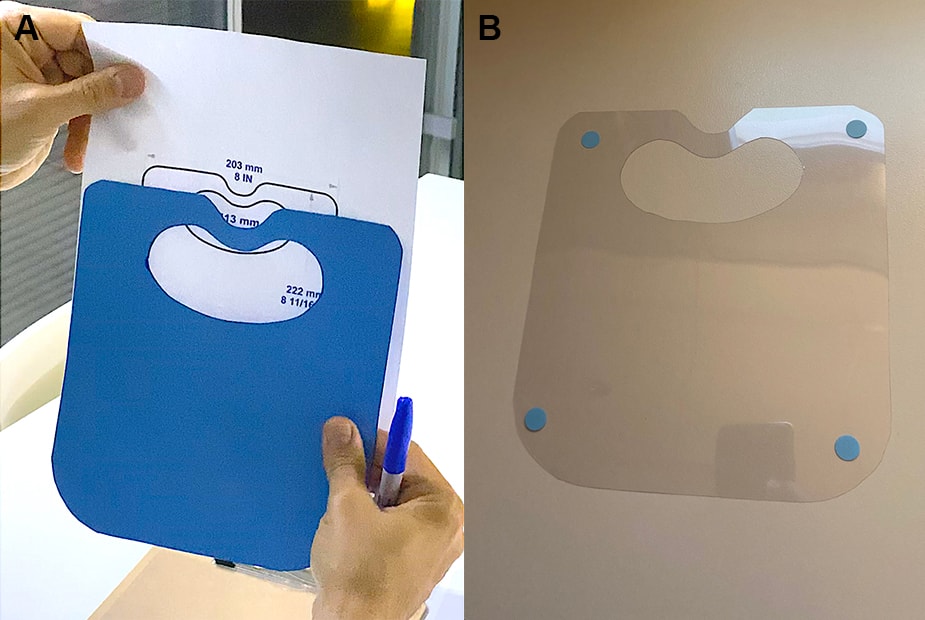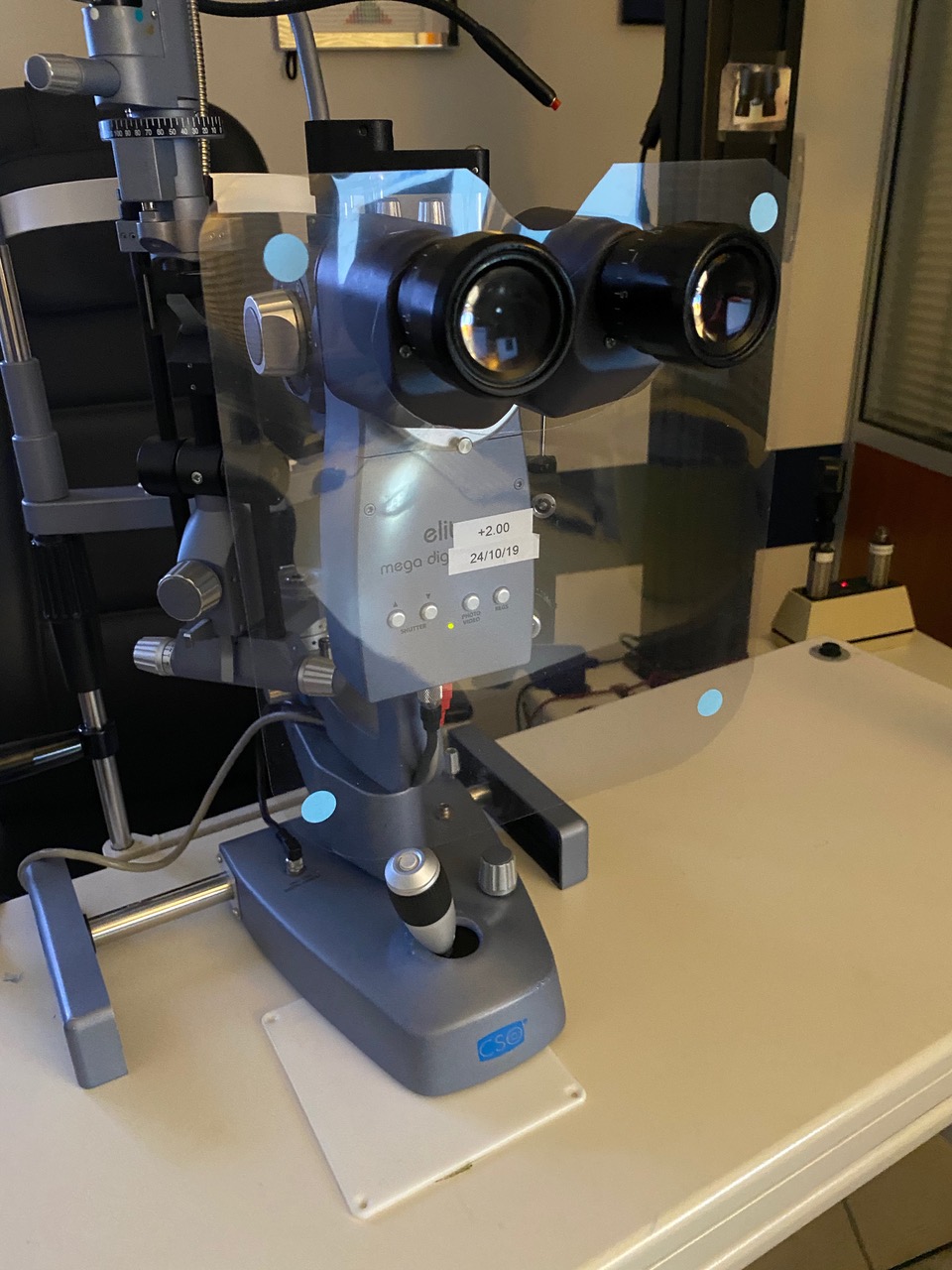The current state of health worldwide is in flux as we deal with the fallout from the coronavirus disease 2019 (COVID-19). Because the risk of infection with this respiratory illness is highest among individuals who are in close contact—within about 6 feet—with individuals known to have the disease,1 it is important that we, as health care professionals, do as much as we can to protect ourselves and to protect our patients during routine examinations and surgical procedures. One way that we can protect both parties is by using a disposable slit-lamp droplet shield like the one I describe here.
BACKGROUND
COVID-19 is rapidly spreading from person to person. On March 7, the World Health Organization (WHO) reported that the global number of confirmed cases of the disease surpassed 100,000.2 The main way that COVID-19 is transferred is through respiratory droplets via sneezing, coughing, and even breathing, but it can also be transferred by first touching a surface or object that has the virus on it and then touching the mouth, nose, or eyes.1
The WHO advises that all countries, communities, and individuals help to contain the spread of COVID-19 through “robust containment and control activities” that include identifying individuals who are sick and bringing them to care, alerting individuals with whom the infected person has come into contact, preparing hospitals and clinics to manage the patient surge, and training health care workers.2
“Every person has the capacity to contribute, to protect themselves, to protect others, whether in the home, the community, the health care system, the workplace, or the transport system,” the WHO statement reads. “Leaders at all levels and in all walks of life must step forward to bring about this commitment across society.”2
DO YOUR PART
We can do our part to help contain the spread of the virus by being diligent about sanitation in our clinics. The slit-lamp droplet shield may not be a significant medical innovation, but it is one easy way that we can protect ourselves from COVID-19 and other pathogens. Most slit lamps are equipped with a protective shield, and several after-market models are commercially available for purchase.
As an alternative or addition to those shields, I have devised a protective disposable shield out of simple letter-sized cellophane sheets. These can be easily made in minutes and installed on slit lamps and surgical microscopes by personnel in your clinic.
Watch It Now
Dr. Kanellopoulos demonstrates how to make a disposable slit-lamp shield.
Figure 1 is a sample of the template for the protective shield, which was modified from a commercially available plexiglass protective shield product3. (Editor’s note: The full-size template can be downloaded here.) In short, a cardboard replica of the template is made (Figure 2A). The cardboard cutout can then be used to trace the template on top of a piece of cellophane. The cellophane is then cut following the pattern on Figure 1, and foam stickers are placed on the four corners to protect technicians from bumping into it (Figure 2B). The kidney bean–shaped opening near the top of the template is placed on the slit-lamp or microscope oculars (Figure 3). The product can fit almost any slit-lamp or microscope oculars.

Figure 1. A reduced size of the template for the disposable slit-lamp shield.

Figure 2. A cardboard replica of the template (A), and an example of the disposable slit-lamp shield (B).

Figure 3. The disposable slit-lamp shield placed on the oculars of a slit lamp.
CONCLUSION
Disposable protective slit-lamp shields are an easy, cheap, and effective way that we can increase safety not only for our medical staff and colleagues, but also for our patients. It is one small step in helping to contain the spread of COVID-19.
1. Centers for Disease Control website. What you need to know about coronavirus disease 2019 (COVID-19). https://www.cdc.gov/coronavirus/2019-ncov/downloads/2019-ncov-factsheet.pdf. Accessed March 10, 2020.
2. World Health Organization website. WHO statement on cases of COVID-19 surpassing 100 000. https://www.who.int/news-room/detail/07-03-2020-who-statement-on-cases-of-covid-19-surpassing-100-000. Accessed March 10, 2020.
3. ChinRestPaperSource. Slit Lamp Breath Shield, Universal, Large, Ergonomic, Flexible PETG. https://chinrestpapersource.com/AMBUL2P. Accessed May 22, 2020.


